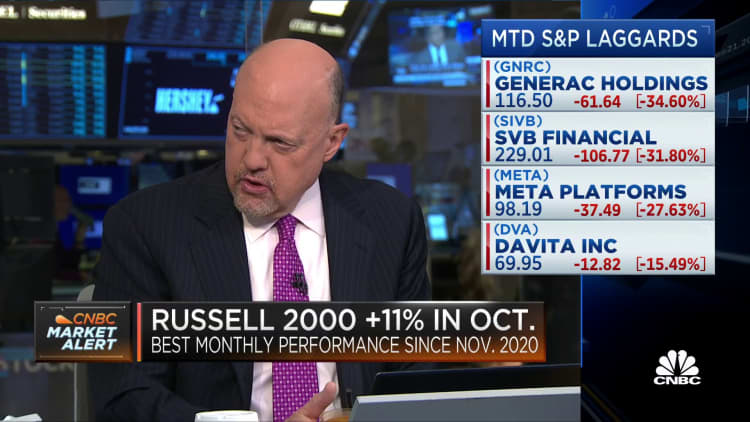marekuliasz | iStock | Getty Images
Some big names suffered large stock losses last week as they reported earnings.
Four companies — Google parent Alphabet, Amazon, Facebook parent Meta and Microsoft — collectively shed more than $350 billion from their market cap, the measure of the total value of all of their shares of stock.
Apple was a bright spot, with its stock soaring on Friday after beating expectations.
Investors who are worried about the tech sector can take comfort in the fact the current shift is not the same as the bust of 2000, according to Raymond James chief investment officer Larry Adam.
A key difference is the companies in question now are more robust, with earnings and in some cases dividends they’re increasing, he said.
As some companies take a hit to their stocks, the biggest takeaway is not to overreact, Adam said.
But it would be wise for investors to watch their exposure.

The biggest names in the pure tech sector — Apple, Microsoft and Visa — make up more than 45% of earnings in that space, according to Adam.
Alphabet and Meta, which are technically in communication services, represent 53% of the earnings in that sector. Amazon is a big player in the consumer discretionary space.
“Tech is more dynamic than it used to be,” Adam said. “It’s in different components and sectors of the economy and the equity market.”
While investors may think they are diversified by owning different funds, they may actually have a lot of duplication across those holdings — and more tech exposure than they realize, said Ryan Viktorin, vice president and financial consultant at Fidelity Investments.
“It’s always about making sure you don’t end up in a lopsided portfolio,” Viktorin said. “You want to always go back to, ‘Am I diversified for the timeline that I have, for the risk tolerance that I have and for the goals I’m trying to achieve?'”
Here’s how to do that.
Assess your true portfolio risk
Increased volatility has prompted many clients to ask, “Am I still ok?” said Viktorin, who is a certified financial planner.
“The most important thing about an allocation or portfolio is get to a place where you can stay invested no matter what,” she said.
Each investor’s true risk may vary based on their circumstances. For example, someone who works in tech is already taking on substantial risk outside of their portfolio because their income is dependent on the sector, Viktorin said.
Ideally, you should be in an allocation diversified enough so that you can withstand a recession and successfully come out the other side, she said.
Look for value
To buy and hold for the long-term, investors should design an allocation that allows them to do that, according to Mark Hebner, president of Index Fund Advisors, an Irvine, California-based firm which was No. 66 on the 2022 CNBC Financial Advisor 100 list.
To do that, Hebner said he prefers to underweight growth stocks in favor of equities that fall under the value category.
Growth stocks are typically companies with high ratios of market value to book value. While those stocks anticipate growth, value stocks tend to outperform, according to Hebner. Notably, tech stocks have surpassed value since the Financial Crisis, but there are signs a revaluation is underway.
More from Personal Finance:
What the next Fed rate hike means for you
Why fear of missing out can be a killer for investors
Tips to help stretch your paycheck amid high inflation
Since 1928, the return of U.S. growth stocks is 9.76% versus 12.6% for value stocks. Moreover, value stocks also outperformed growth in international and emerging markets.
“You want to design an allocation of stocks that give you exposure to small value in your allocation,” Hebner said.
Funds that offer that exposure to small value indexes, through Russell in the U.S. and MSCI internationally, can help with that, Hebner said. Fund providers to look to may include iShares, Vanguard and Dimensional Fund Advisors, he said.